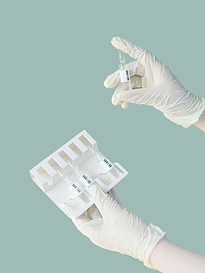
We are committed to serving patients with respiratory distress and making a positive impact in their lives!

KAER's expertise is recognized for the invention and development of products that generate high-concentration respirable aerosols from liquid APIs, complex biologics and advanced formulations. Our AeroPulsR™ (aqueous aerosol) and SUPRAER™ (dry aerosol) systems enable the generation and delivery of therapeutic aerosols adapted specifically to the pediatric or adult patient's tidal volume (or target tissue) for optimum deposition. To facilitate minimum treatment duration, our products generate aerosols at rates up to 10 times higher than existing nebulization technologies. An important breakthrough achieved by KAER is that the payload integrity and bioactivity of the generated aerosol are maintained following aerosolization across a wide range of viscosities and molecular structures.
Novel potential agents in the pipelines become drugs when they are successfully delivered to resolve the patient’s ailment. KAER invites corporations to evaluate the delivery of their APIs and formulations with AeroPulsR™ and SUPRAER™. These potential entities and avenues are summarized below.

Critical & Acute Care
Emergency Room
Intensive Care Unit
Neonatal ICU
Pediatric ICU
Surgical Suite
Chronic & Home Care
Asthma
COPD
IPF
Specialty Clinics
TB/Lung Cancer Treatment Rooms

Active Agents
Antibodies
Bacteriophage
Biologics
mRNA Vaccines
Olegonucleotides
Pulmonary Surfactant

Formulation Carriers
Agarose
Chitosan
Dendrimer Technology
Hydrogels
Lipid Nanoparticles (LNPs)
Polymer Formulations
Pulmonary Surfactant
Automation – Industrial and Anti-infectives for Animal Healthcare
KAER aerosol technology fulfills three automation essentials: 1) repeatable aerosol plume quality, 2) accurate agent dosing, and 3) precise millisecond aerosol output control.
Unlike conventional atomizers and mesh nebulizers that recirculate the liquid, KAER’s aerosolizing nozzles enable single-pass liquid flow, i.e. 100% of the liquid entering the nozzle is aerosolized within a few microseconds. This process eliminates drug denaturing, clogging, dripping, or overheating. The aerosol output quality, including the particle size, dose and plume volume, is maintained throughout the aerosolization duration and each operation cycle.
Combined with practically unlimited drug container volume, the integrated drug dispenser enables the delivery of precise dosimetry throughout the duration of the treatment procedure. This aspect of the product is especially crucial for aerosol delivery in production lines and mass vaccination systems.
The AeroPulsR is fully compatible with existing pneumatic outlets in both clinical care as well as industrial applications allowing seamless integration into patient care facilities or automated delivery lines. The internal hardware and integrated electronics are designed to handle repeatable or continuous aerosol delivery with millisecond precision.
A key application is animal health, wherein synchronized aerosol doses as crates of chicks moving past fixed nozzle banks on conveyor lines, ensure uniform deposition of vaccine at line speed. For adhesives and paints, collimated jets enable precise line coating and spot bonding on fast-moving parts. When wide-area coverage is required, the system produces soft, uniform plumes for surfaces, textiles, and packaging with minimal overspray.
KAER's Intensive Patent Portfolio
Covers 6 Major Continents and Countries with
22 Issued and 5 Pending Patents

